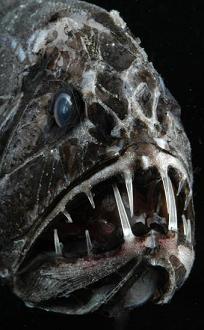| Author |
 Topic Topic  |
|
Just_Charlie
Advanced Member
    
.jpg)
8578 Posts
Member since 07/01/2008 |
|
|
Gil-galad
stripovi.com suradnik
    

Serbia
3544 Posts
Member since 19/05/2008 |
 Posted - 30/10/2013 : 03:30:34 Posted - 30/10/2013 : 03:30:34




|
Sjajan topic! Zvezde, o, da... Imam i zvezdani nick, moliću. Zvezde, o, da... Imam i zvezdani nick, moliću.
Nešto slično, nedavno sam naleteo na ovaj sajt i od tada ga pratim, posvećen kometi nazvanoj Comet ISON, a koju označavaju i kao "The Comet of the Century"...
http://www.cometison2013.co.uk/ |
Edited by - Gil-galad on 30/10/2013 03:37:27 |
 |
|
|
Johnny Difool
Advanced Member
    

Croatia
13988 Posts
Member since 21/02/2010 |
|
|
Johnny Difool
Advanced Member
    

Croatia
13988 Posts
Member since 21/02/2010 |
|
|
Just_Charlie
Advanced Member
    
.jpg)
8578 Posts
Member since 07/01/2008 |
 Posted - 01/11/2013 : 02:11:01 Posted - 01/11/2013 : 02:11:01





|
Hahaha..
It may look wicked, but a stunning — if not scary — new view of the Witch Nebula

.. unveiled by NASA today for Halloween is actually the home of baby stars just beginning their cosmic lives.
"Astronomers say the billowy clouds of the nebula, where baby stars are brewing, are being lit up by massive stars," NASA officials wrote in an image description. "Dust in the cloud is being hit with starlight, causing it to glow in infrared light, which was picked up by WISE's detectors." |
~ Prvo suputnik onda put ~
|
 |
|
|
mladjo
Advanced Member
    
.jpg)
Croatia
20013 Posts
Member since 15/04/2007 |
|
|
panzer
Advanced Member
    
12758 Posts
Member since 18/05/2005 |
 Posted - 06/11/2013 : 09:33:50 Posted - 06/11/2013 : 09:33:50




|
The Big History Project is a free, online course that tells the story of our Universe and humanity.
Developing a framework to help people learn about anything and everything. It's inherently interdisciplinary – combining the best of social studies, humanities, and science.
* It will take about 6-8 hours to complete the core material and quizzes
* The content mixes great editorial with videos, infographics, and imagery
* Features leading academics and experts in a range of fields
* Optional quizzes test your knowledge along the way
https://www.bighistoryproject.com/bhplive |
Ich bin kein Mensch, ich bin kein Tier, ich bin ein Panzer-Grenadier! |
Edited by - panzer on 06/11/2013 09:34:33 |
 |
|
|
Just_Charlie
Advanced Member
    
.jpg)
8578 Posts
Member since 07/01/2008 |
|
|
Just_Charlie
Advanced Member
    
.jpg)
8578 Posts
Member since 07/01/2008 |
 Posted - 09/11/2013 : 00:47:50 Posted - 09/11/2013 : 00:47:50





|
Cosmic Poetry: The Sombrero Galaxy..

A brilliant white core is encircled by thick dust lanes in this spiral galaxy, seen edge-on. The galaxy is 50,000 light-years across and 28 million light years from Earth.
Credit: NASA and The Hubble Heritage Team |
~ Prvo suputnik onda put ~
|
 |
|
|
lwood
Advanced Member
    

Colombia
47575 Posts
Member since 09/12/2005 |
 Posted - 09/11/2013 : 13:34:44 Posted - 09/11/2013 : 13:34:44




|
| od 10 milijardi naseljivih planeta neki oblik života se razvia na minimalno 1 % od njih |
You stared at the abyss, you'll never rest in peace |
 |
|
|
Just_Charlie
Advanced Member
    
.jpg)
8578 Posts
Member since 07/01/2008 |
 Posted - 10/11/2013 : 11:30:47 Posted - 10/11/2013 : 11:30:47





|
quote:
Originally posted by lwood
od 10 milijardi naseljivih planeta neki oblik života se razvia na minimalno 1 % od njih
quote:
Originally posted by mladjo
Ali ne treba biti isključiv i vjerovati da postojanje života znači da on mora biti sličan našem. Zašto ne bi bio recimo na bazi silicija? Ili, zašto ne, ne bi mogao na neki način funkcionirati u otovrenom svemiru? Možda je inteligencija u svemiru u nekom totalno drugom stanju od našeg.Tko zna...
 |
~ Prvo suputnik onda put ~
|
 |
|
|
Just_Charlie
Advanced Member
    
.jpg)
8578 Posts
Member since 07/01/2008 |
|
|
Just_Charlie
Advanced Member
    
.jpg)
8578 Posts
Member since 07/01/2008 |
 Posted - 10/11/2013 : 11:51:52 Posted - 10/11/2013 : 11:51:52





|

Od 13 do 15. studenoga 2013. u Tehničkom muzeju očekuje vas niz zanimljivih predavanja sa tematikom svemira.
Cilj predavanja je popularizacija astronomije i astronautike te animacija mladih za prirodne i tehničke znanosti.
U tijeku tri dana održat će se 9 različitih predavanja o istraživanju svemira i svemirskim letovima, uz projekcije.
Teme će obuhvatiti različite vrste nebeskih tijela, procese koji se odvijaju u svemiru, različite načine istraživanja, vrste i tehničke karakteristike svemirskih letjelica i raketa-nosača, mogućnosti znanstvenih instrumenata, tehniku svemirskih letova i svemirsku tehnologiju.
Ulaz na sva predavanja je besplatan! Predavanja se održavaju u kinodvorani Tehničkoga muzeja.
Besplatne ulaznice možete podići na blagajni Muzeja. Broj ulaznica je ograničen.
Tehnički muzej, Zagreb, Savska cesta 18, tel. 48 44 050
PROGRAM PREDAVANJA:
SRIJEDA, 13. studenoga 2013.
17.30 – 18.30 Ogren Variola: „Charles Messier“
19.00 – 20.00 Dario Hrupec: „Gama-astronomija: Najmlađa grana opažačke astronomije“
20.30 – 21.30 Davor Horvatić: „Što se to kuha oko Velikog praska?“
ČETVRTAK, 14. studenoga 2013.
17.30 – 18.30 Goran Hudec: „Kineska astronautika danas i sutra“
19.00 – 20.00 Damir Lozovina: „Naša galaksija“
20.30 – 21.30 Ante Radonić: „Rakete-nosači“
PETAK, 15. studenoga 2013.
17.30 – 18.30 Slobodan Danko Bosanac: „Osvajanje svemira“
19.00 – 20.00 Sandrino Požežanac: „Znanstveno-fantastična stvarnost“
20.30 – 21.30 Vladis Vujnović: „Kozmička letjelica Voyager 1 na putu u nepoznato“ |
~ Prvo suputnik onda put ~
|
 |
|
|
Just_Charlie
Advanced Member
    
.jpg)
8578 Posts
Member since 07/01/2008 |
 Posted - 10/11/2013 : 12:01:03 Posted - 10/11/2013 : 12:01:03





|
Gdje se trenutno nalazi satelit GOCE koji pada na Zemlju
Europska svemirska agencija obećala je da će na svojoj web stranici objaviti popis mogućih mjesta na koja bi GOCE mogao pasti, nakon što ih budu mogli pobliže odrediti.
GOCE pada brzinom od oko 13 kilometara na dan, a gdje će pasti još nije poznato. Većina satelita teškog 1.100 kilograma izgorjet će tijekom ulaska u atmosferu no oko 50 njegovih dijelova odnosno 25 posto mase satelita past će na kopno ili u ocean.
Satelit je protekle četiri godine prikupio najpreciznije dosad podatke o varijacijama gravitacijskog polja Zemlje a stvorio je i prvu kartu visoke rezolucije na kojoj je vidljiva granica između zemljine kore i omotača.
Nitko ne zna gdje će dijelovi satelita pasti, ali pretpostavlja se da će to vjerojatno biti u ocean ili na nenaseljeno područje. Za svaki slučaj, područje iznad kojeg se u svakom trenutku nalazi satelit možete pratiti na
http://www.esa.int/Our_Activities/Observing_the_Earth/GOCE/Track_GOCE |
~ Prvo suputnik onda put ~
|
 |
|
|
Just_Charlie
Advanced Member
    
.jpg)
8578 Posts
Member since 07/01/2008 |
|
|
Just_Charlie
Advanced Member
    
.jpg)
8578 Posts
Member since 07/01/2008 |
 Posted - 16/11/2013 : 23:50:50 Posted - 16/11/2013 : 23:50:50





|
The Tarantula Nebula
This photo from the Hubble Space Telescope shows the heart of the Tarantula nebula, a region teeming with star formation. The image is a giant mosaic view released on April 17, 2012 to mark Hubble's 22nd anniversary in space. ESO telescope observations augment the view.
Credit: NASA/ESA/ESO
 |
~ Prvo suputnik onda put ~
|
 |
|
|
Just_Charlie
Advanced Member
    
.jpg)
8578 Posts
Member since 07/01/2008 |
|
|
Just_Charlie
Advanced Member
    
.jpg)
8578 Posts
Member since 07/01/2008 |
|
|
mladjo
Advanced Member
    
.jpg)
Croatia
20013 Posts
Member since 15/04/2007 |
|
|
mladjo
Advanced Member
    
.jpg)
Croatia
20013 Posts
Member since 15/04/2007 |
|
|
mladjo
Advanced Member
    
.jpg)
Croatia
20013 Posts
Member since 15/04/2007 |
|
|
mladjo
Advanced Member
    
.jpg)
Croatia
20013 Posts
Member since 15/04/2007 |
|
|
Just_Charlie
Advanced Member
    
.jpg)
8578 Posts
Member since 07/01/2008 |
 Posted - 22/11/2013 : 00:58:21 Posted - 22/11/2013 : 00:58:21





|

The beautiful Trifid Nebula is a cosmic study in colorful contrasts. Also known as M20, it lies about 5,000 light-years away toward the nebula rich constellation Sagittarius. A star forming region in the plane of our galaxy, the Trifid illustrates three different types of astronomical nebulae; red emission nebulae dominated by light emitted by hydrogen atoms, blue reflection nebulae produced by dust reflecting starlight, and dark nebulae where dense dust clouds appear in silhouette. |
~ Prvo suputnik onda put ~
|
 |
|
|
Just_Charlie
Advanced Member
    
.jpg)
8578 Posts
Member since 07/01/2008 |
 Posted - 22/11/2013 : 01:02:38 Posted - 22/11/2013 : 01:02:38





|

It's about 35 million light years distant, located beneath the handle of the Big Dipper. On a clear, dark night you can make out the spiral arms if you have a telescope with sufficient aperture (8 in. or so). It is actually one of the brightest galaxies that can be seen, and it is unusual in that it shows a high surface brightness, despite its face-on aspect to Earth. It is also known as M51, being a significant member of the Messier Catalog. It consists of two spiral galaxies that appear to be interacting gravitationally, although the "larger" one appears to lie closer to us than the "smaller" one. It is a favorite target for amateur astronomers in the northern hemisphere, since it is essentially circumpolar and therefore visible throughout the year during at least some portion of the night for most observers in that region.
You should perhaps keep in mind that anything we see occurring "now" within the Whirlpool Galaxy actually occurred 35 million years ago within their frame of reference - i.e. as they saw it take place. It has taken that long for the light conveying that information to reach us across that distance.
You should also keep in mind that any trip to that location is strictly a one way affair. Even if you could travel across that distance and somehow return, the Earth would be in an entirely different location and condition upon your return. Your friends and family would have died centuries - eons - in the dim past. |
~ Prvo suputnik onda put ~
|
 |
|
|
Just_Charlie
Advanced Member
    
.jpg)
8578 Posts
Member since 07/01/2008 |
 Posted - 22/11/2013 : 01:10:37 Posted - 22/11/2013 : 01:10:37





|

Lynds Bright Nebula 552 is a very faint dusty nebula found in Draco. Lynd’s classification on brightness is from 1 (brightest) to 6 (barely detectable) – this one is a 5. The brighter nebula just left center is cataloged as Cohen 129. |
~ Prvo suputnik onda put ~
|
 |
|
 Topic Topic  |
|

